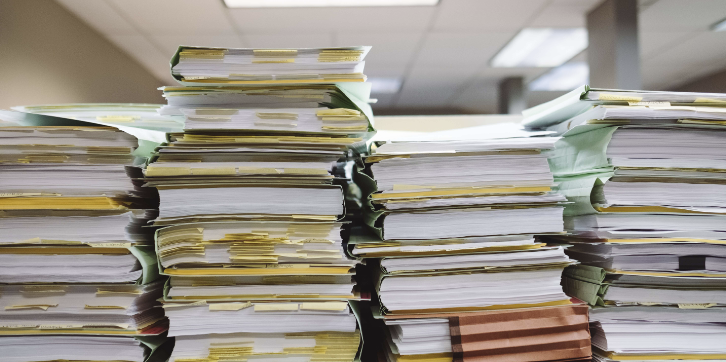
How Has the Future of Lien Waiver Management Changed since 2021?

Managing and collecting lien waivers can be difficult when dealing with multiple contractors and suppliers. A single project can require up to 50 waivers, and project administrators are forced to constantly remind contractors about them. Wasting precious time that could be spent working on other project tasks.
Electronic signatures (e-signature) and notary services have changed the way lien waivers are completed. The pandemic in 2020 made these technologies mainstream due to the restrictions on personal contact. Teams that adopt these technologies and invoice submission automation, will quickly get ahead of those still struggling to collect paper documents.
Rise of e-signatures
E-signatures have been legally recognized in the United States since 1999. There are two government acts that were passed in regard to the use of e-signatures: The Uniform Electronic Transactions Act (UETA) and the Electronic Signatures in Global and National Commerce Act (ESIGN).
According to DocuSign, “Both ESIGN and UETA establish that electronic records and signatures carry the same weight and legal effect as traditional paper documents and handwritten signatures, Stating that a document or signature cannot be denied legal effect or enforceability solely because it is in electronic form.” Most states have adopted UETA, and the ESIGN act was federally recognized.
Bring Us Up to Date,
Today there are several e-signature platforms available, both free and paid. Adobe and DocuSign are two of the more well-known. They allow users to create e-signature and then execute them on emailed documents. Signers can now sign documents using their phone or tablet.
Most of the available platforms allow users to upload documents, add signature lines, dates, and other text, then send a notice via email to the signer. The signer clicks on a link, completes the required information, and places their signature on the document. The software returns the document to the sender for completion and then automatically distributes the signed document to all parties. It also allows the sender to track who has signed the document and who hasn’t and sends reminders when a document is awaiting signature.
These platforms allow document signers to take care of business from anywhere and on any device with an internet connection. They are easy to use and don’t require a lot of tech knowledge to operate, making them great for all types of users in all types of businesses.
One benefit of e-signatures is that documents can now be signed without having to come into physical contact. In 2020 avoiding physical contact or touch items such as pens or paper became a necessity. Once the pandemic hit the ability to sign documents virtually was vital to the continuation of business.
Documents sent for e-signature are completed sooner, improving efficiencies and saving time for all parties. The ability to track documents and see who needs to sign at any time helps to avoid document bottlenecks and ensures that business keeps moving along.
Electronic notary services
Lien waivers are required to be notarized in only three states: Mississippi, Texas, and Wyoming. Although they may not legally need to be notarized, many project owners and general contractors insist on having them notarized anyway. “Notarization is simply the verification of a signature. Getting a document notarized doesn’t make it any more true, false, clear, or effective. It simply makes it easier to later prove the document was actually signed by the person who signed it.”
During the Coronavirus pandemic in 2020, bank lobbies and other locations that offered notary services were closed to the public. This meant it was more difficult to get documents notarized. Some states had already introduced electronic notaries before the pandemic, but there were several that hadn’t yet adopted this new technology. After the pandemic started, more states added the ability to perform electronic or remote notaries. These laws still require notaries to be commissioned by each state before offering services and made it easier for documents to get notarized.
Electronic or remote notary services are provided through software platforms with secure video chat services. These platforms ensure safe communication between the notary and the person signing the document. The notarized document is then sent to both the signer and the notary. Notarized documents have to be kept on file for 10 years.
The use of electronic notary services have significantly affected the speed at which lien waivers can be completed. Along with e-signature, they help both contractors and subcontractors process paperwork faster and get paid sooner.
Automation speeds processing time
By automating the signature-notary processes around lien waiver collection, project teams can save more time and get paid even faster. Invoicing software like MX Build allows contractors to submit payment applications and immediately receive a conditional lien waiver for the amount of the application. After signing the document electronically, the waiver is automatically forwarded to the contractor’s client.
Invoicing software can also distribute lien waivers through email once payments have been sent out. An unconditional lien waiver can be emailed to the subcontractor and be signed as soon as the payment is confirmed. Once signed, the waivers are returned immediately to the contractor or subcontractor via email. There’s no waiting for snail mail or trying to get a fax to go through. This speeds the document collection process, allowing payment applications to be submitted faster and payments to be processed quicker.
Sending and collecting lien waivers in one location makes finding them easier and saves time. There’s no lost papers or documents to search for, it’s all in the software and can be easily packaged for submission to the owner.
Conclusion
E-signature and notary services will continue to gain in popularity as they become more available and are adopted by more states. The pandemic has ensured that any tech that reduces in-person contact will be the process of the future. Gathering documents electronically speeds up the process of submitting pay applications and gathering the required lien waivers. This in turn speeds up the payment process for all contractors on a project.
Automating the process of sending out and receiving lien waivers helps avoid the hassle of lost documents and missing papers. Software can also provide reminders to waiver signers when documents are overdue.
If you want to save time and money on your payment application and waiver process, then it pays to adopt an automatic invoicing and lien waiver collection software package like MX Build. You’ll save time and headaches gathering documents and get paid faster. Everyone on the team will be glad you’re using this tool.









